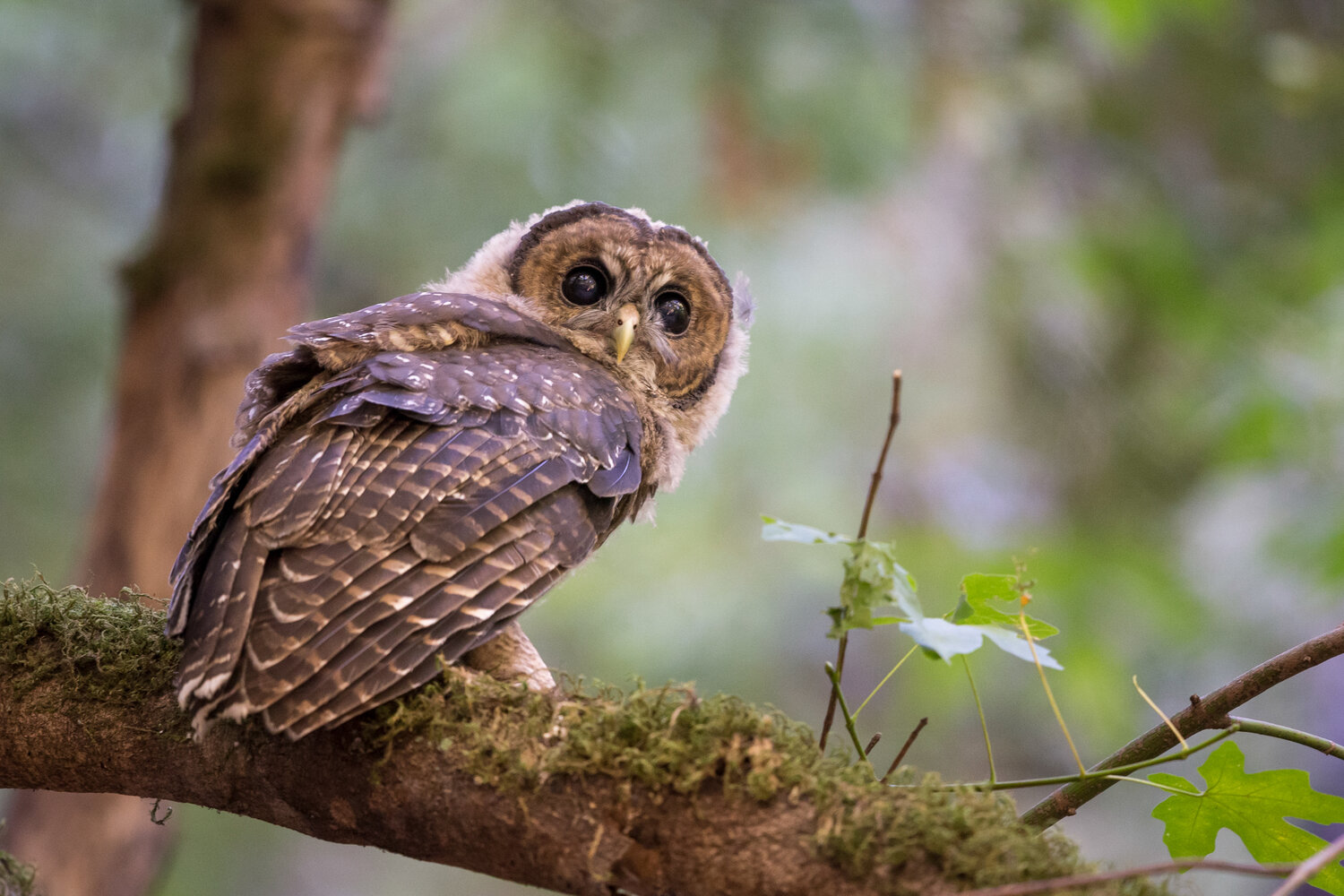Bird of the Month: Spotted Owl
By Andy McCormick
PC: Sylvia Hunt/Audubon Photography Awards (Spotted Owl)
Scientific Name: Strix occidentalis
Length 17.5 in
Wingspan 40 in
Weight 1.3 lb
AOU Band code SPOW
“The Northern Spotted Owl is an indicator species for Pacific Northwest old-growth forest; in other words, the state of this bird represents the state of these forests. In this role, it has become an icon of efforts to preserve old-growth forests in the region” (Bannick). The Northern Spotted Owl lives in the northwestern maritime forest which has a mix of western red cedar, western hemlock, Douglas fir and Pacific silver fir located west of the Cascade Crest.
The Northern Spotted Owl of the Pacific Northwest is one of three subspecies along with the California Spotted Owl and Mexican Spotted Owl. The genus Strix is originally from the Greek strix, an owl. Occidentalis is Latin referring to the west or western, this owl’s natural range. The common name Spotted refers to the white spots on it plumage (Holloway). The Northern subspecies is darker than the other two and it has smaller spots. Many bird species have darker plumage in the northern, wetter climates.
Spotted Owls are brown overall with elliptical white spots on most of its body. They do not have ear tufts as some other owls do. Their flight is low and direct (Alderfer). The call is a low four-note hoot which can be heard at the Macaulay Library. They are strictly nocturnal but can sometimes be found roosting in a tree during the day.
Spotted Owls begin nesting in March choosing a cavity in a large hollow tree or possibly in a cave. They do not build a nest, but make a scrape of debris at the site. Usually two eggs are deposited. The female will incubate the eggs for about a month. During this time the male will bring food for the female and then continue to feed the young, which are ready to leave the nest after five weeks. The adults will continue to tend them for several more weeks feeding on voles, deer mice, woodrats and other smaller owls and birds (Kaufman).
The habitat requirements for Northern Spotted Owls are quite specific and because this habitat has a high commercial value as harvested wood by the logging industry, this owl has been studied more than any other species as part of a long-running controversy pitting those who want to preserve its habitat and those who want to log the forests. Nest sites are found more frequently in deeper forest areas in late stages of maturity. “In general, this species uses forests with greater complexity and structure than random sites for nesting in both managed and unmanaged forests” (Guttierrez, et al). The Northern subspecies is now listed as endangered in Washington and Canada and threatened under the US Endangered Species Act.
Further adding to its already steep decline has been expansion of the range of the Barred Owl, an Eastern North American species that has been nesting in Washington and California. The Barred Owl is aggressive toward Spotted Owls and, despite the success states have had in preserving old-growth habitat, the population of Northern Spotted Owls continues a steep decline. “Between 2000 and 2007, the population of Northern Spotted Owls in Washington State fell by approximately 50 percent” (Bannick). There may be 300 nesting pairs existing in its range. To counter this trend the US Fish & Wildlife Service has adopted a plan to experimentally kill Barred Owls in four geographical areas to allow Spotted Owls time to recover in the absence of Barred Owls. One of the four areas is near Cle Elum, WA. UFWS officials believe if humans do not interview the Northern Spotted Owl is on a road to extinction.


